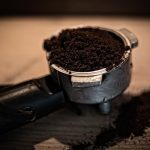How to export coffee to United States requires meticulous planning and adherence to specific regulations. The United States, a major consumer of coffee, offers a lucrative market for coffee exporters. However, navigating the complexities of U.S. import laws, food safety standards, and market preferences is crucial for success. This comprehensive guide will detail the key steps involved in exporting coffee to the United States, covering everything from market research to customs clearance.
1. Market Research and Planning:
Before embarking on the export journey, conducting thorough market research is paramount. Understanding U.S. coffee consumption trends, consumer preferences, and competitive landscape will inform your export strategy.
- Identify Target Market: Determine your target consumer segment. Are you targeting specialty coffee shops, large-scale retailers, or online consumers? Research their preferences in terms of coffee origin, processing method (washed, natural, honey), roast level, and flavor profiles.
- Analyze Competition: Identify existing coffee importers, distributors, and brands in the U.S. market. Analyze their pricing strategies, marketing techniques, and distribution channels to understand the competitive landscape.
- Understand Consumer Preferences: The U.S. coffee market is diverse. Research the popularity of different coffee types (e.g., Arabica, Robusta), brewing methods (e.g., drip, espresso, cold brew), and flavor trends (e.g., single-origin, flavored coffees).
- Regulatory Compliance Research: In addition to research around consumer market, it is a must to research the requirements of the US government for coffee export. This would involve understanding the required documents and policies governing the product.
Sources:
- National Coffee Association (NCA): (https://www.ncausa.org/) Provides market research, statistics, and industry insights on coffee consumption in the U.S.
- Specialty Coffee Association (SCA): (https://sca.coffee/) Offers resources on specialty coffee trends, quality standards, and consumer preferences.
2. Compliance with U.S. Regulations:
How to export coffee to United States is heavily regulated to ensure food safety and quality. Coffee exporters must comply with the regulations of several U.S. government agencies:
- U.S. Food and Drug Administration (FDA): The FDA regulates the safety and labeling of food products imported into the United States.
- Food Safety Modernization Act (FSMA): FSMA mandates preventive controls throughout the food supply chain to prevent foodborne illnesses. Coffee exporters must comply with FSMA regulations, including the Foreign Supplier Verification Program (FSVP), which requires importers to verify that their foreign suppliers meet U.S. food safety standards.
- Prior Notice: Exporters must provide prior notice to the FDA before importing coffee shipments into the United States. This involves submitting information about the product, manufacturer, shipper, and importer.
- Labeling Requirements: Coffee labels must comply with FDA regulations, including accurate product name, net weight, ingredient list (if applicable), and the name and address of the manufacturer, packer, or distributor.
- U.S. Customs and Border Protection (CBP): The CBP oversees the import of goods into the United States, including collecting duties and enforcing trade regulations.
- Entry Requirements: Coffee exporters must file entry documents with the CBP, including a commercial invoice, packing list, bill of lading, and other required documents.
- Tariffs and Duties: Coffee may be subject to tariffs and duties depending on its origin and classification. Exporters should consult the Harmonized Tariff Schedule of the United States (HTSUS) to determine the applicable tariff rates.
- U.S. Department of Agriculture (USDA): The USDA regulates agricultural products, including coffee, and enforces phytosanitary regulations.
- Phytosanitary Certificates: Depending on the origin of the coffee, exporters may need to obtain phytosanitary certificates from their country’s agricultural authority to certify that the coffee is free from pests and diseases.
- Organic Certification: If exporting organic coffee, exporters must comply with USDA’s National Organic Program (NOP) regulations and obtain certification from an accredited certifying agent.
Sources:
- U.S. Food and Drug Administration (FDA): (https://www.fda.gov/) Provides information on food safety regulations, labeling requirements, and import procedures.
- U.S. Customs and Border Protection (CBP): (https://www.cbp.gov/) Offers guidance on import regulations, tariffs, and entry requirements.
- U.S. Department of Agriculture (USDA): (https://www.usda.gov/) Provides information on agricultural regulations, phytosanitary requirements, and organic certification.
3. Finding an Importer or Distributor:
How to export coffee to United States effectively often involves partnering with a U.S.-based importer or distributor. These intermediaries have established distribution networks, market knowledge, and expertise in navigating U.S. regulations.
- Research Potential Partners: Identify potential importers or distributors that specialize in coffee and have experience working with exporters from your country.
- Due Diligence: Conduct due diligence on potential partners to assess their reputation, financial stability, and market reach.
- Negotiate Agreements: Negotiate clear agreements with importers or distributors, outlining responsibilities, pricing, payment terms, and marketing strategies.
- Direct Sales: While challenging, selling directly to retailers or consumers through online channels is an option, requiring significant investment in marketing and logistics.
Sources:
- Industry Associations: Contact industry associations like the National Coffee Association (NCA) and the Specialty Coffee Association (SCA) for referrals to potential importers and distributors.
- Trade Shows and Events: Attend coffee trade shows and events in the U.S. to network with potential partners and learn about market trends.
- Online Directories: Utilize online directories and databases to identify coffee importers and distributors in the U.S.
4. Shipping and Logistics:
How to export coffee to United States relies on efficient shipping and logistics. Choosing the right shipping method and ensuring proper documentation is essential for timely and cost-effective delivery.
- Shipping Options: Consider various shipping options, including sea freight (container shipping) and air freight. Sea freight is generally more cost-effective for larger shipments, while air freight is faster but more expensive.
- Packaging: Package coffee securely to prevent damage during transit. Use moisture-resistant packaging materials and consider vacuum-sealing or nitrogen-flushing to preserve freshness.
- Documentation: Prepare all necessary shipping documents, including a commercial invoice, packing list, bill of lading, and any required certificates (e.g., phytosanitary certificate, organic certificate).
- Insurance: Obtain cargo insurance to protect against loss or damage during shipping.
- Customs Broker: Consider hiring a customs broker to assist with customs clearance and ensure compliance with U.S. import regulations.
Sources:
- Freight Forwarders: Contact reputable freight forwarders to obtain quotes for shipping costs and assistance with logistics.
- Customs Brokers: Work with licensed customs brokers to navigate U.S. customs regulations and ensure smooth clearance of your coffee shipments.
5. Quality Control and Traceability:
How to export coffee to United States also entails maintaining strict quality control and traceability throughout the supply chain. U.S. consumers are increasingly demanding high-quality coffee with clear provenance.
- Quality Standards: Implement rigorous quality control measures at every stage of the coffee production process, from harvesting and processing to roasting and packaging.
- Traceability Systems: Establish a traceability system that allows you to track the origin of your coffee beans, processing methods, and other relevant information.
- Certifications: Obtain certifications like Fair Trade, Rainforest Alliance, or UTZ to demonstrate your commitment to sustainable and ethical sourcing practices.
Sources:
- Coffee Quality Institute (CQI): (https://www.coffeeinstitute.org/) Offers training and certification programs for coffee graders and quality assessors.
- Certification Organizations: Partner with reputable certification organizations to obtain certifications that demonstrate your commitment to quality, sustainability, and ethical sourcing.
FAQs:
-
What are the main requirements for exporting coffee to the U.S.?
The main requirements include complying with FDA regulations (FSMA, prior notice, labeling), CBP regulations (entry requirements, tariffs), and USDA regulations (phytosanitary certificates, organic certification if applicable).
-
Do I need an import license to export coffee to the U.S.?
No, the U.S. does not require an import license for coffee. However, the importer in the U.S. will need to comply with all relevant regulations and procedures.
-
What is the FSVP and how does it affect coffee exporters?
The Foreign Supplier Verification Program (FSVP) requires U.S. importers to verify that their foreign suppliers meet U.S. food safety standards. Coffee exporters must provide their importers with the necessary information and documentation to comply with FSVP requirements.
-
How can I find a reliable importer or distributor in the U.S.?
You can find potential importers or distributors through industry associations, trade shows, online directories, and by conducting thorough research and due diligence.
-
What are the common mistakes to avoid when exporting coffee to the U.S.?
Common mistakes include failing to comply with U.S. regulations, inadequate packaging, inaccurate documentation, and not conducting thorough market research.
-
What types of payment terms are common in the coffee trade?
Common payment terms include letters of credit, documentary collections, and open account. Letters of credit offer the highest level of security for exporters.
-
Are there any tariffs or duties on coffee imported into the U.S.?
Coffee may be subject to tariffs and duties depending on its origin and classification. Consult the Harmonized Tariff Schedule of the United States (HTSUS) for specific tariff rates.
-
How important is organic certification for exporting coffee to the U.S.?
Organic certification is increasingly important as U.S. consumers demand organic products. If you are exporting organic coffee, you must comply with USDA’s National Organic Program (NOP) regulations and obtain certification from an accredited certifying agent.
-
What is the best way to ensure the quality and freshness of my coffee during shipping?
Use moisture-resistant packaging materials, consider vacuum-sealing or nitrogen-flushing, and choose a shipping method that minimizes transit time.
-
How can I stay up-to-date on changes in U.S. import regulations?
Monitor the websites of the FDA, CBP, and USDA for updates on regulations and policies. Subscribe to industry newsletters and attend trade shows to stay informed.
By following these steps and conducting thorough research, coffee exporters can successfully navigate the complexities of the U.S. market and establish a thriving business. Remember to prioritize compliance, quality, and building strong relationships with your U.S. partners.





